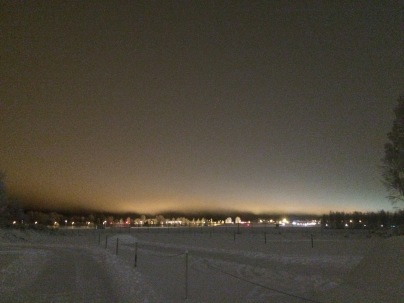Of all the places I’ve traveled to, India had the biggest impact. You can never prepare for this mythic country of 1.4 billion people; it challenges your concept of equilibrium, scale, and of course, your senses to the core.
But brave the heat, the smells, the filth, the poverty, the monkeys, the rats and the dogs, the traffic, the beggars and the touts and you will start to understand an ancient, diverse culture whose population is alarmingly close to that of China.
My journey began in Delhi, then by car, we drove to Jaipur, the capital of Rajasthan. From there a long winding road took us through villages to Ranthambore national park. After a relaxing few days, we headed to Agra and the Taj Mahal, followed by Khajuraho. We saved the most transformative experience for last; Varanasi, the holiest city in India.
 Indian National Congress symbol.
Indian National Congress symbol.
 A typical street scene in New Delhi. Large areas of the city are populated by people who literally live in the gutter. This picture does not tell the story, there are areas where thousands of people live this way, the location defined by their lot in life. Rickshaw drivers have their sections, and rubber tire recyclers have their own. The scale is unimaginable.
A typical street scene in New Delhi. Large areas of the city are populated by people who literally live in the gutter. This picture does not tell the story, there are areas where thousands of people live this way, the location defined by their lot in life. Rickshaw drivers have their sections, and rubber tire recyclers have their own. The scale is unimaginable.
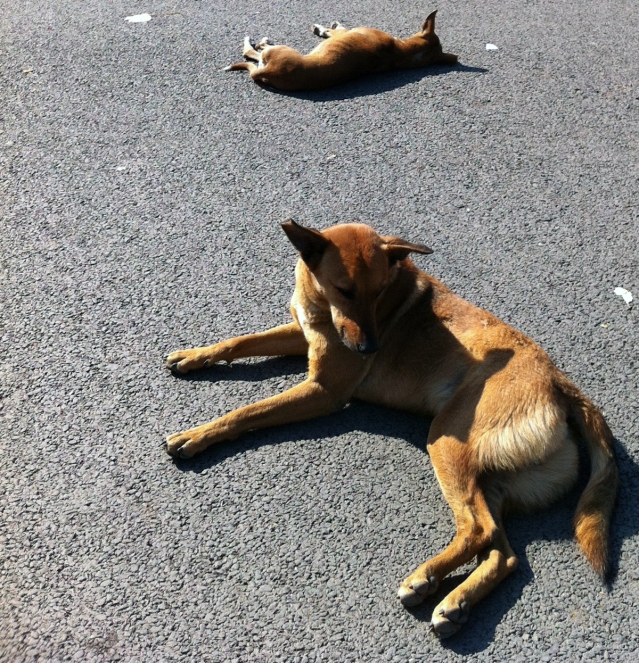 The INDog, or the Indian Pariah Dog, is possibly the oldest and purest of dog breeds. Smart, adaptable, and also responsible for a large number of the approx. 20,000 annual rabies deaths in India.
The INDog, or the Indian Pariah Dog, is possibly the oldest and purest of dog breeds. Smart, adaptable, and also responsible for a large number of the approx. 20,000 annual rabies deaths in India.
On the road from Delhi, smaller villages.

 Barbershop.
Barbershop.
A collection of Indian graphic arts. Though you see some of the more Western graphic expressions, especially in larger cities, much of the visual vocabulary is so refreshingly straightforward. “Drink Amul milk”, no lifestyle projections forced upon the viewer. What you see is what you get.
Jaipur, Rajasthan
Jaipur, the land of the Rajputs is littered with forts and Havelis (mansions).
 Amber Fort, Jaipur, by elephant. The animals are remarkably well cared for, working only mornings.
Amber Fort, Jaipur, by elephant. The animals are remarkably well cared for, working only mornings.

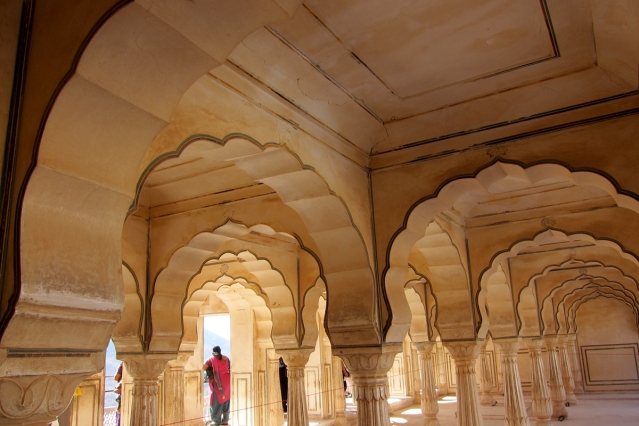

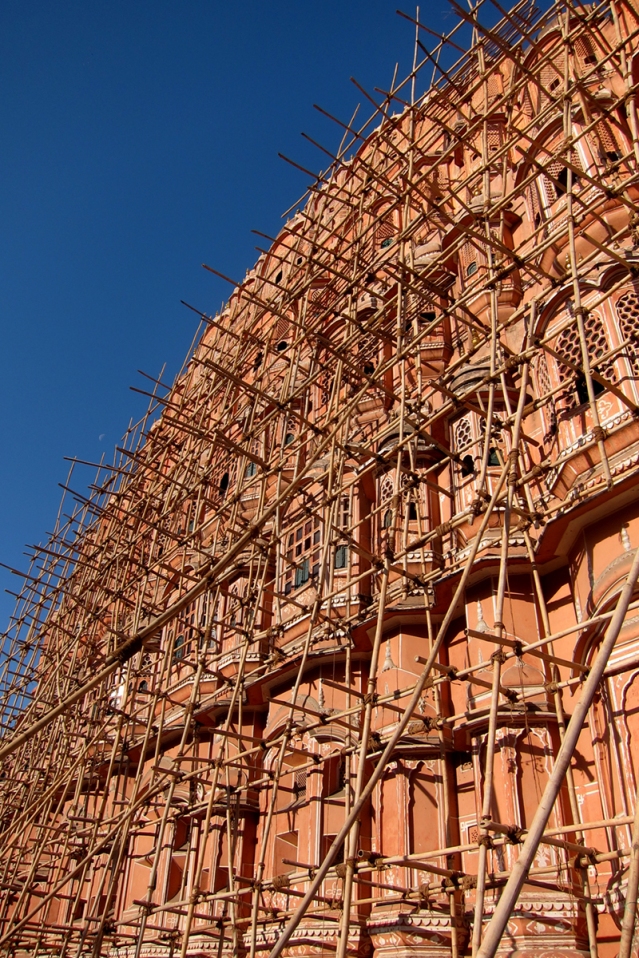 Hawa Mahal, Jaipur.
Hawa Mahal, Jaipur.
 Ganesha, the remover of obstacles, my travel patron saint.
Ganesha, the remover of obstacles, my travel patron saint.
Ranthambore National Park
Known for its tiger population, my safari experience through Ranthambore NP was rather unspectacular. We did spot a nearly extinct striped hyena, Sambars, Gaurs, and some bored monkeys, but the surrounding villages and temples were far more interesting. Like so many other places in India, if you stray from the tourist paths, you will quickly get a glimpse into a more authentic culture.

 These rock stupas are built by temple goers as a way to invoke favors from the gods. Each stone represent a room in the house they hope will materialize.
These rock stupas are built by temple goers as a way to invoke favors from the gods. Each stone represent a room in the house they hope will materialize.

Visits to various temples in the area. Langurs and other monkeys are never far away. They can get quite pesky and intimidating in groups of 50-100. Langurs are sometimes brought into cities to control the Rhesus monkey population, which apparently is wreaking havoc in areas. The other photos: Fig trees quickly take over ruins, and other figs. Holy man at some shrine. My bindi.
 Lingam is a representation of the Hindu deity, Shiva.
Lingam is a representation of the Hindu deity, Shiva.
 Jain man I encountered.
Jain man I encountered.
 In the Hanuman temple area, which also featured a Jain temple and a mosque, I was followed by this group of kids. This was an area that rarely see foreigners so I became a tourist attraction…
In the Hanuman temple area, which also featured a Jain temple and a mosque, I was followed by this group of kids. This was an area that rarely see foreigners so I became a tourist attraction…
A guy playing a traditional Rajasthani instrument, Ravanahatha, near Ranthambore National Park.
Agra/Taj Mahal, Uttar Pradesh
After days outside of the tourist destinations, I felt ambivalent about visiting the Taj Mahal as I was dreading the hordes of tourists. But even though every experience is hampered by security checks, touts, and lines, TM is an absolute miracle. Erected by Shah Jahan almost 400 years ago, most people do not realize this is one of the many lasting impacts of Muslim (Mughal) culture in India.



On the road from Agra to Khajuraho.


Khajuraho, Madhya Pradesh
The city, known mostly for its temples featuring erotic art, is an interesting place to explore in itself. I was there during a festival of Shiva and counted only a few other Westerners in the area. Consequently, I had a lot more interactions with locals than one might otherwise expect. A curious thing happened; an attractive woman in, I’d say, her 30s, came up to me and asked about a photo. At first I thought she wanted me to take her picture but her husband clarified that she wanted one of me with her, and, as it turns out, her Baba (father) and other family members.
 Wandering ascetics live from hand to mouth, literally. They rely on alms, which the population, no matter how poor, support.
Wandering ascetics live from hand to mouth, literally. They rely on alms, which the population, no matter how poor, support.


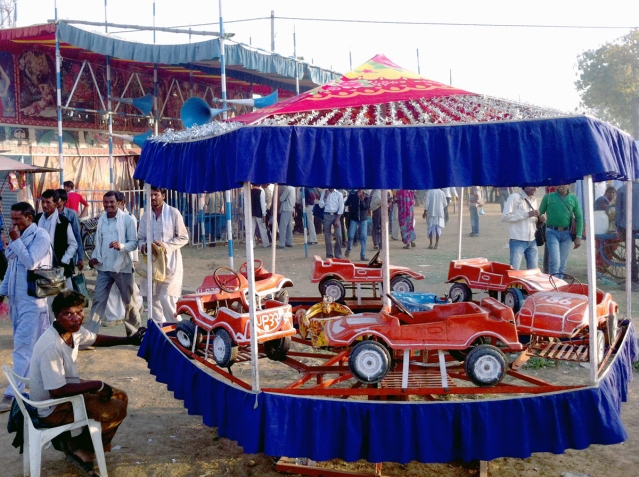

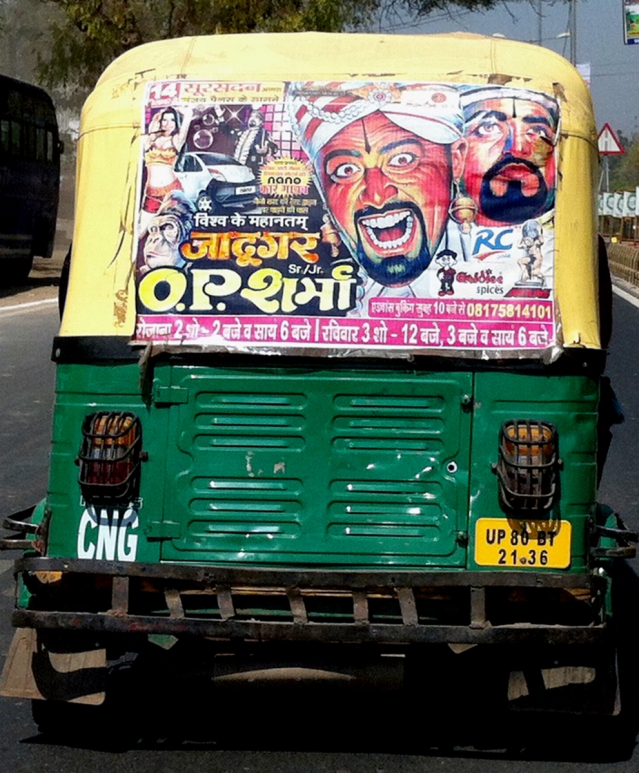




Varanasi, Uttar Pradesh
Formerly known as Benares, Varanasi is India’s holiest city. Hindus believe that death here will bring salvation and flock to the city. Or they are carried here. Lining its winding streets are a couple of thousand temples and pedestrians share the narrow streets with funeral processions, buffalo, the occasional monkey, rats, dogs, and anything that moves.
 One of the many wandering sages, having renounced all material possessions, even clothes.
One of the many wandering sages, having renounced all material possessions, even clothes.
 Donating hair. It is thrown, like everything else, into the Ganges
Donating hair. It is thrown, like everything else, into the Ganges

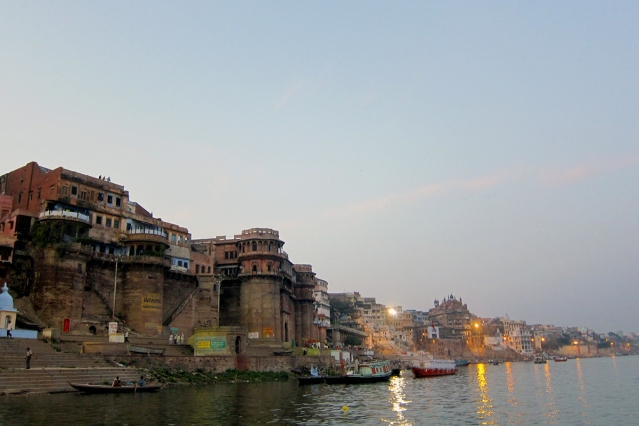
 Impromptu funeral/celebration for a dead monkey.
Impromptu funeral/celebration for a dead monkey.
 I have heard several theories as to why people can bathe, do laundry and drink the water from the Ganges despite the horrific amount of pollutants finding their way into the river. One of the more compelling theories is that the Himalayan-fed water is especially richly oxygenated, allowing fish and bacteria to live that would normally die given the levels of toxins.
I have heard several theories as to why people can bathe, do laundry and drink the water from the Ganges despite the horrific amount of pollutants finding their way into the river. One of the more compelling theories is that the Himalayan-fed water is especially richly oxygenated, allowing fish and bacteria to live that would normally die given the levels of toxins.


The burning ghats.
A few families have for millennia kept the flames going that draw the dying to this place. If you’re lucky, you can get very close to the funeral pyres, and literally breathing in the smoke and ashes. Families gather as their loved ones go up in flames, seemingly unaffected. The perks of reincarnation.





 In Varanasi, I was chased by a monkey and very nearly gored by a bull.
In Varanasi, I was chased by a monkey and very nearly gored by a bull.
Categories: India































